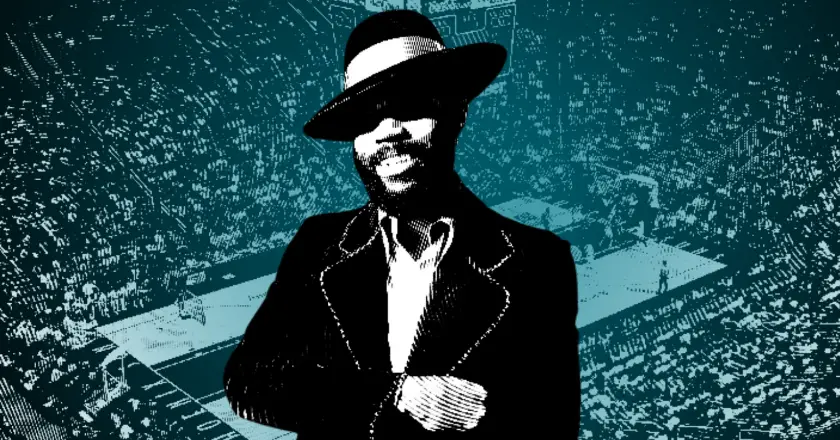The National Basketball Association (NBA) has long been recognized not only for its incredible athletic prowess but also for the unique and evolving styles and fashion statements made by its players. Over the years, NBA players have become influential trendsetters, shaping popular culture with their distinctive on and off-court fashion choices. This article delves into the fascinating evolution of style and fashion in the NBA, tracing its roots from humble beginnings to the multimillion-dollar industry it is today.
When the NBA was first established in the 1940s, the focus was solely on the game itself. Players wore basic uniforms that consisted of shorts, tank tops, and high socks, with little room for individual expression. Fashion was secondary to the sport, and players opted for functional clothing rather than making bold fashion statements.
In the 1960s, as the league gained popularity, players started experimenting with their hairstyles and accessories. Notable players like Wilt Chamberlain and Jerry West brought a touch of individuality to their on-court appearance, sporting afros and headbands. However, compared to the flamboyant styles that would emerge in later decades, this era was still relatively conservative.
The 1970s witnessed a significant cultural shift that reflected in NBA players’ fashion choices. The league became more diverse, and players began expressing themselves through their personal style. Iconic figures like Julius Erving, better known as Dr. J, brought a sense of flamboyance to the game. Dr. J was famous for his high-flying dunks and his signature afro, which became synonymous with his playing style.
Players also started experimenting with their attire off the court. The emergence of disco culture had a profound influence on fashion, and NBA players embraced bold colors, wide lapels, bell-bottoms, and platform shoes. They became trendsetters, influencing popular fashion trends beyond the basketball court.
The 1980s witnessed an explosion of style in the NBA. With the arrival of Magic Johnson and Larry Bird, the league experienced a surge in popularity and became more globally recognized. The rivalry between these two superstars captivated audiences and transcended the sport, making basketball a mainstream phenomenon.
This era saw the birth of sneaker culture. As companies like Nike, Converse, and Adidas started endorsing NBA players, sneakers became an integral part of players’ style. Magic Johnson’s iconic Converse Weapon and Michael Jordan’s Air Jordan line became highly coveted fashion items, turning basketball shoes into a billion-dollar industry.
On-court fashion also underwent a transformation. Players like Julius Erving, Darryl Dawkins, and Clyde Drexler popularized stylish and flashy moves, adding a touch of showmanship to the game. Baggy shorts and loose-fitting jerseys gained popularity, influencing streetwear fashion.
The 1990s witnessed the convergence of hip-hop culture and the NBA, resulting in a fashion revolution. Players like Allen Iverson, known for his rebellious attitude, brought streetwear fashion to the forefront. Baggy jeans, oversized jerseys, and bandanas became synonymous with Iverson’s iconic style, reflecting the influence of hip-hop music and urban fashion.
The athleisure trend also gained momentum during this period. NBA players became increasingly involved in fashion collaborations, endorsing brands, and launching their clothing lines. Dennis Rodman, known for his eccentric style and vibrant hair colors, became a fashion icon and challenged traditional gender norms with his unique fashion choices.
The 2000s marked the era of superstar players like Kobe Bryant, LeBron James, and Dwyane Wade, who not only dominated the court but also became influential fashion icons. With their immense popularity, players began to embrace high-end fashion, attending fashion shows, collaborating with luxury brands, and gracing magazine covers.
Players like Wade and James brought tailored suits and formal attire to the forefront, establishing a new standard of sophistication in the NBA. The league’s dress code, implemented in 2005, also played a role in elevating players’ fashion choices, requiring them to wear business casual or formal attire during team activities.
In recent years, NBA players have used fashion as a platform for self-expression and making social statements. The league has become more accepting of individual style, and players have used their fashion choices to support causes and raise awareness about social issues.
Players like Russell Westbrook and James Harden have embraced avant-garde fashion, pushing boundaries and challenging traditional norms. They have become style icons, collaborating with fashion designers and blurring the lines between sports and high fashion.
The evolution of style and fashion in the NBA is a testament to the league’s growth and its impact on popular culture. From the functional and conservative styles of the early years to the flamboyant and daring fashion statements of recent times, NBA players have continuously pushed the boundaries and influenced fashion trends.
As the NBA continues to evolve, it is certain that the league’s players will continue to make bold fashion choices and leave their mark on the fashion world. The intersection of sports and fashion will remain a dynamic and exciting aspect of the NBA, captivating fans both on and off the court.


